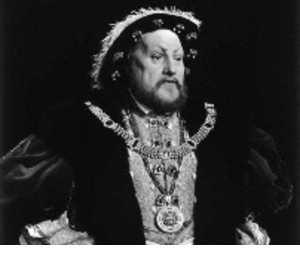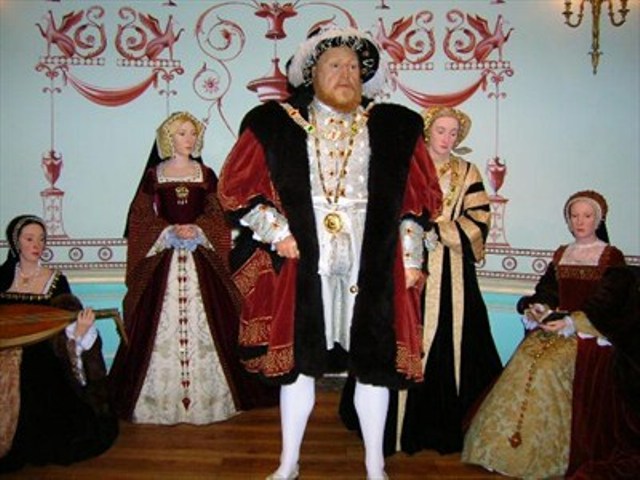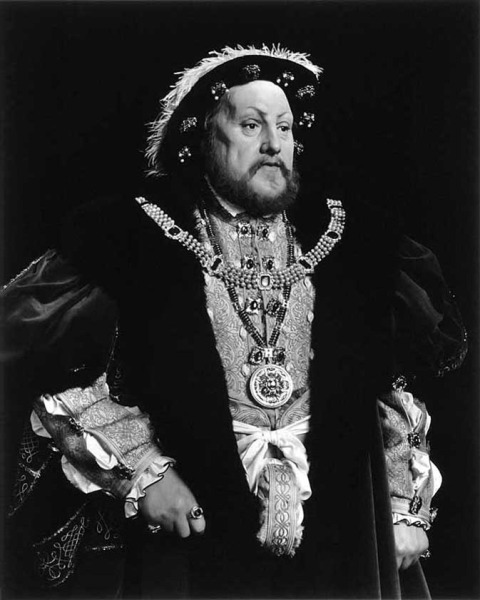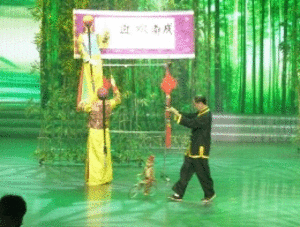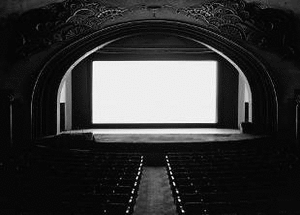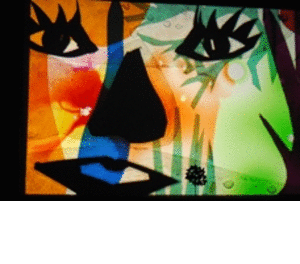Seven large portraits are currently on show at Sudely Castle, Winchcombe, in England. For Puppetring magazine, concerned with puppeteers and with techniques that give life to the inanimate, the exhibition offers an intriguing sideways glance at another art, through the work of conceptual photographer Hiroshi Sugimoto and his own surprising ‘animation’.
The black and white photographs are part of a series entitled “Portraits” commissioned by the Deutsche Guggenheim Museum for an exhibition in 1999; they have been lent to Sudely Castle this year, 2012, as part of the 500th anniversary celebrations of the birth of Catherine Parr, last wife of Henry VIII, who lived at Sudely after Henry’s death.
These three-quarter portraits of individuals, apparently exuding vitality, repose, or world-weariness, for example, are in fact photographs of waxwork figures: Henry VIII in his later years and his six wives. Perhaps you have seen them at Madame Tussauds in London, placed together – as if existing in polygamic harmony – in a period setting.
The exhibition text says of “Portraits” that Hiroshi Sugimoto “isolated historical figures from staged vignettes in wax museums, posed them in three-quarter length view, and illuminted them in order to create haunting detailed portraits.” And of the group at Sudely Castle: “The resulting lush, painterly photographs recall the sixteenth century paintings from which the figures were originally sculpted, collapsing time and obscuring the boundaries between reproduction, painting, photography and history”.
Paintings referenced are above all by Hans Holbein the Younger but others were also used, as in the case of the wax figure of Anne Boleyn, based on a copy of a portrait by an unknown artist, while the painting of the young Catherine of Aragon is by Michael Sittow.
Sugimoto says of the group’s origin and his process: “In the sixteenth century Hans Holbein the Younger, German court painter to the British Crown, painted several imposing and regal portraits of Henry VIII. Based on these portraits, the highly skilled artisans of Madame Tussaud’s wax museum re-created an absolutely faithful likeness of the king. Using my own studies of the Rennaissance lighting by which the artist might have painted, I remade the royal portrait, substituting photography for painting. If this photograph now appears lifelike to you, perhaps you should reconsider what it means to be alive here and now.”
Having seen the exhibition, I can say that the lighting is, indeed, extraordinary. The play of light and shadow brings out details of facial expression and gesture, and highlights details of costume or jewellery. To give just two examples, there is Catherine Parr’s textured, embroidered collar, (collars and necklaces are particularly eloquent, bearing in mind that two of the six women were beheaded), and the subtle glint of the gold “H” on Henry’s chest, hanging from a chain round his neck.
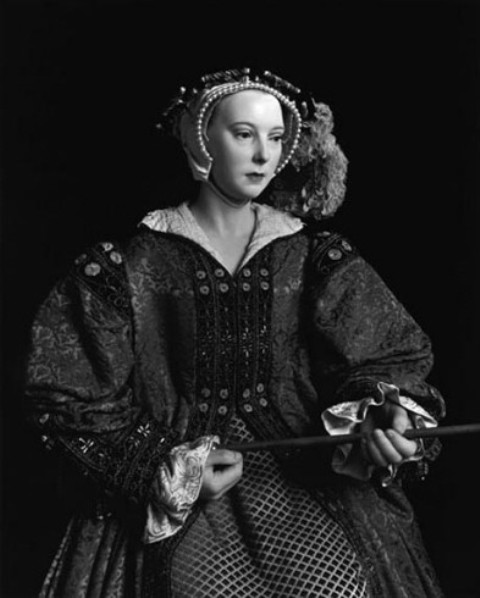
Hiroshi Sugimoto, Catherine Parr, from “Portraits”, commissioned work for the Deutsche Guggenheim, 1999
Are waxwork museum figures, I wonder, the antithesis of puppets? For a start they are, by their nature, static, freezing the image of a real or imagined moment in a person’s life. They create an impression of the original model that is as faithful as possible. The ambition is that a wax figure be a complete, perfect, representational reproduction.
Limiting the discussion to human figures, a puppet, on the other hand, will have at least one of the following characteristics:
– it is not life size – smaller, or sometimes bigger, but rarely standard human size,
– it moves, and it moves in such a way that it is apparent that it is not a human being,
– aspects of its facial features and bodily proportions, or form, differ – consciously, knowingly, necessarily – from certain human attributes or capabilities.
Depending on the puppet maker’s art and the puppeteer’s skill, as well as the public’s disposition perhaps, such “lack” is part of what leads the audience to make the mental and imaginary leap enabling them to connect with the puppet on stage, provoking engagement, psychological projection, and/or identification, (the process can be defined in different ways). The puppet offers a surface, or a space, a gap, so that something – often something not fully conscious – in each individual can come to life. An aspect of the self takes the stage, so to speak, for a time. Thus creative engagement occurs, energising the observer who takes part in the communal rite that is theatre.
To return to Hiroshi Sugimoto’s black and white photographs, – which have effected a reduction from a three dimensional to a two dimensional image -, the artist has given the human figures an added life-like quality that constantly shifts, coming and going as you look at them; they have been curiously animated, (given soul, “anima”), in such a way that makes them surprising and fascinating. Were the models living and breathing when the images were made? One is left wanting to go back and look at them again.
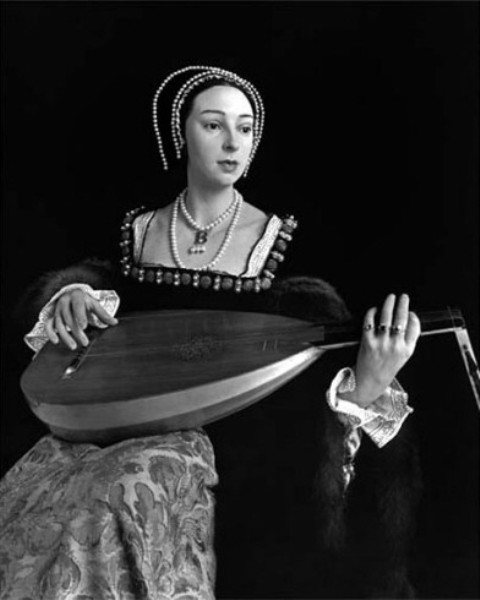
Hiroshi Sugimoto, Anne Boleyn, from “Portraits”, commissioned work for the Deutsche Guggenheim, 1999
The work throws up questions about individual lives and their relationship to history; and about time, the reality of documentary truth (to which black and white photography traditionally lays claim), and, as the artist himself said, about what it means to be alive here and now.
Hiroshi Sugimoto (b. 1948, Japan) is a highly important and influential artist, with a practice that spans photography, architecture, and installation. He is the recipient of numerous honors and awards, including the Praemium Imperiale Award for Painting, (2009), the Hasselblad Foundation International Award (2001); and the International Center of Photography, 15th Annual Infinity Award for Art, New York (1999). His work is held in numerous public collections including The Metropolitan Museum of Art, New York; Museum of Contemporary Art, Tokyo; The National Gallery, London; The National Museum of Modern Art, Tokyo; Smithsonian Institute of Art, Washington, DC, and Tate, London, among others. Sugimoto lives and works in New York City. He is represented by The Pace Gallery.

